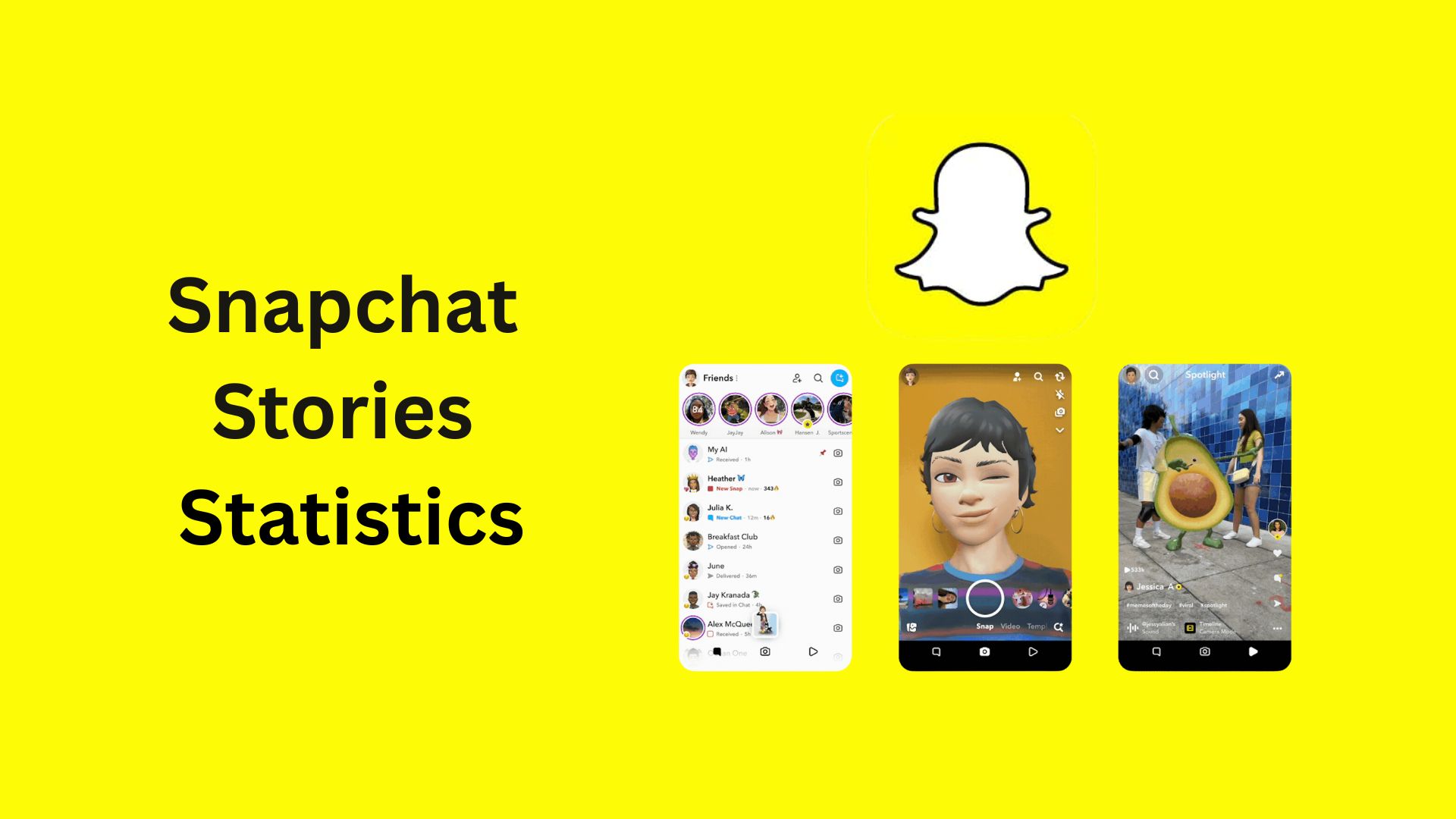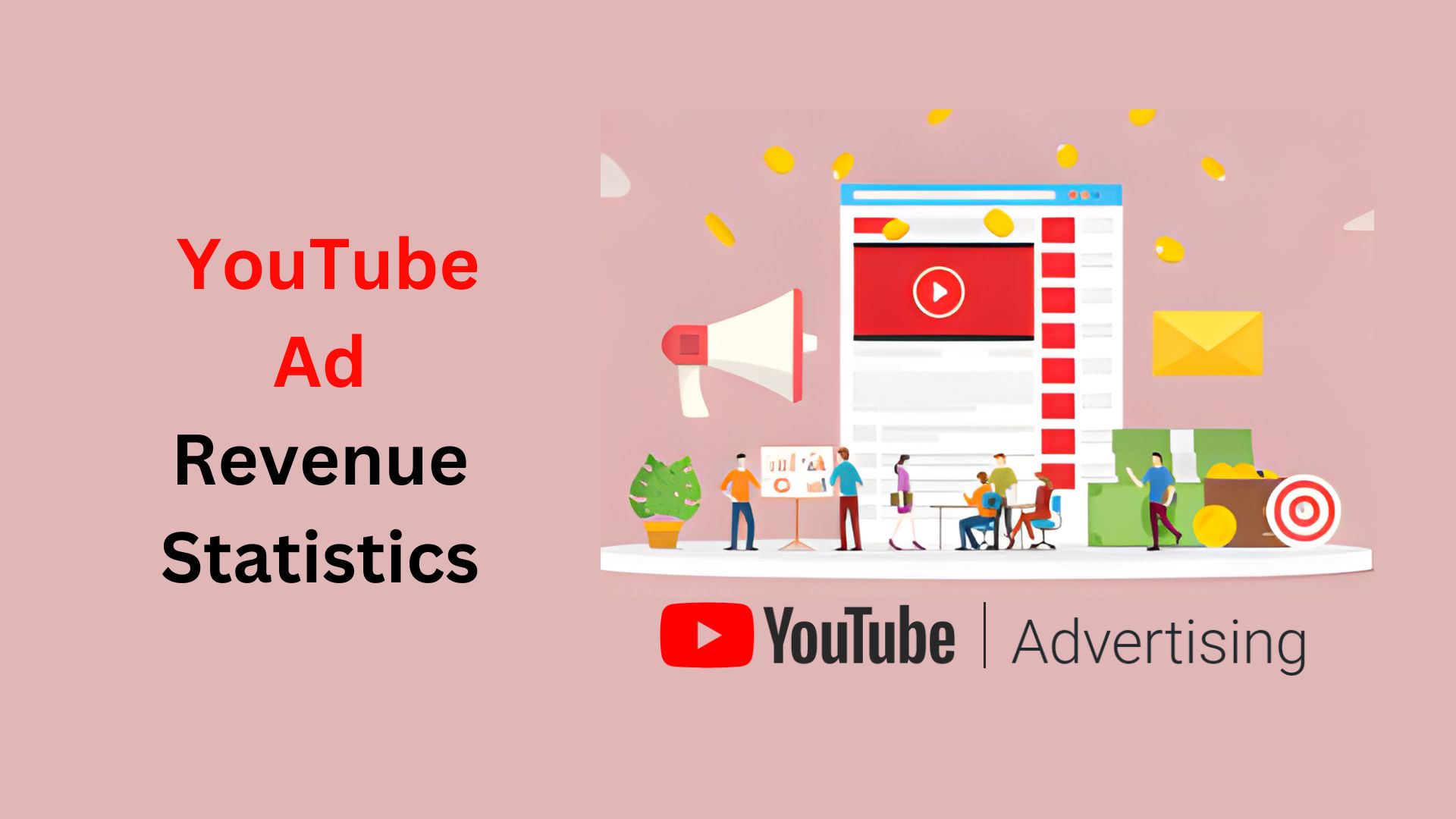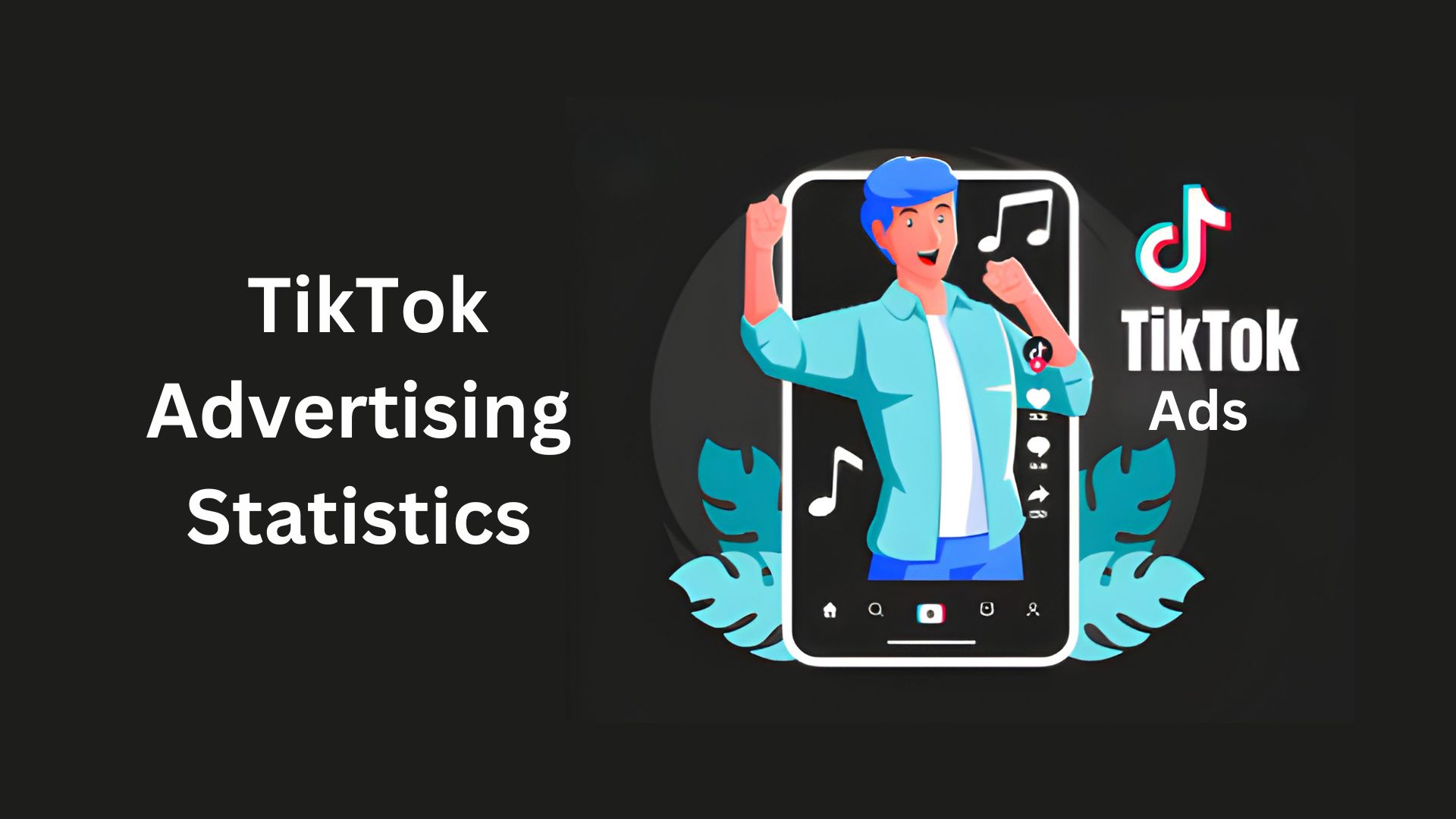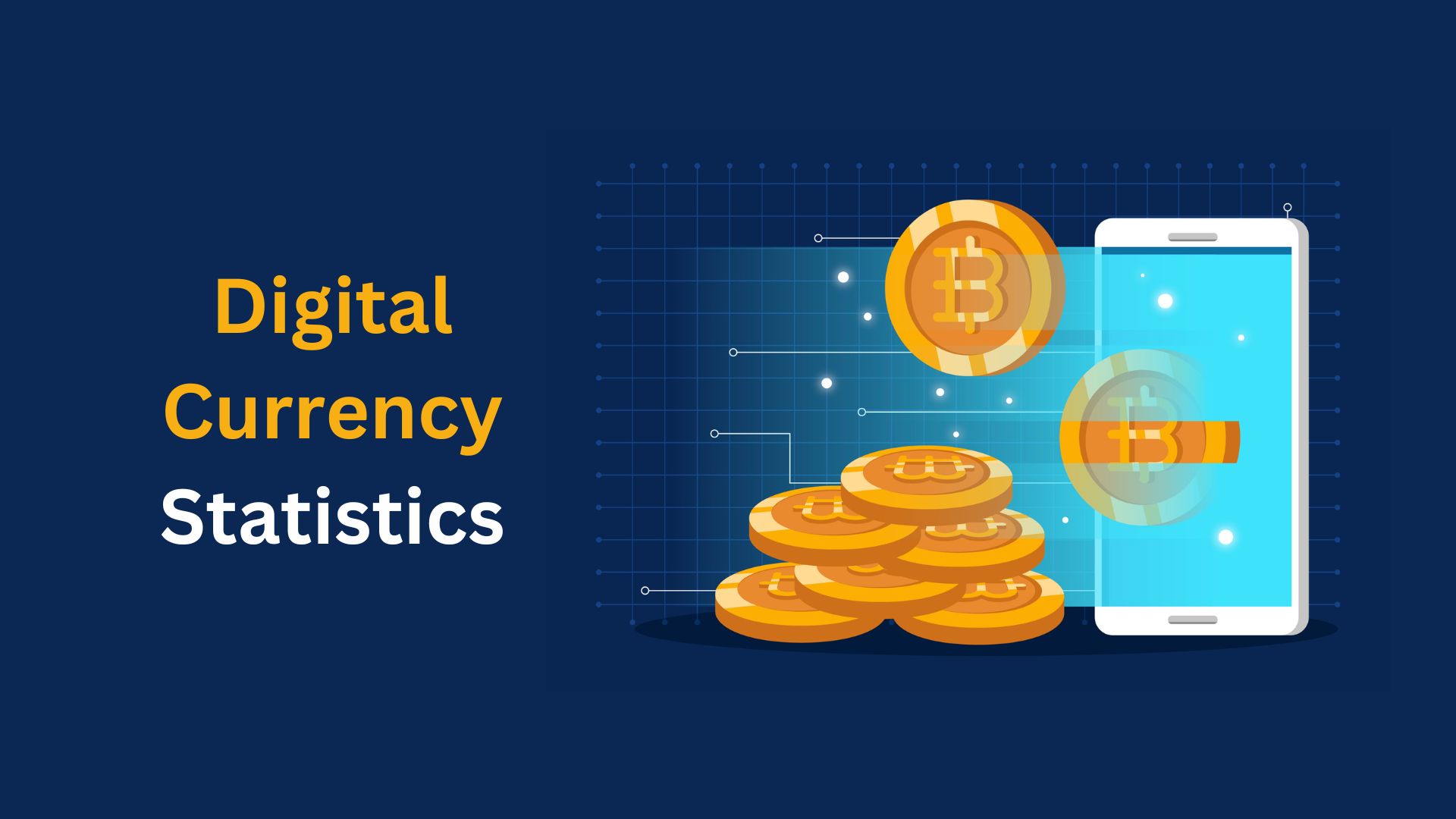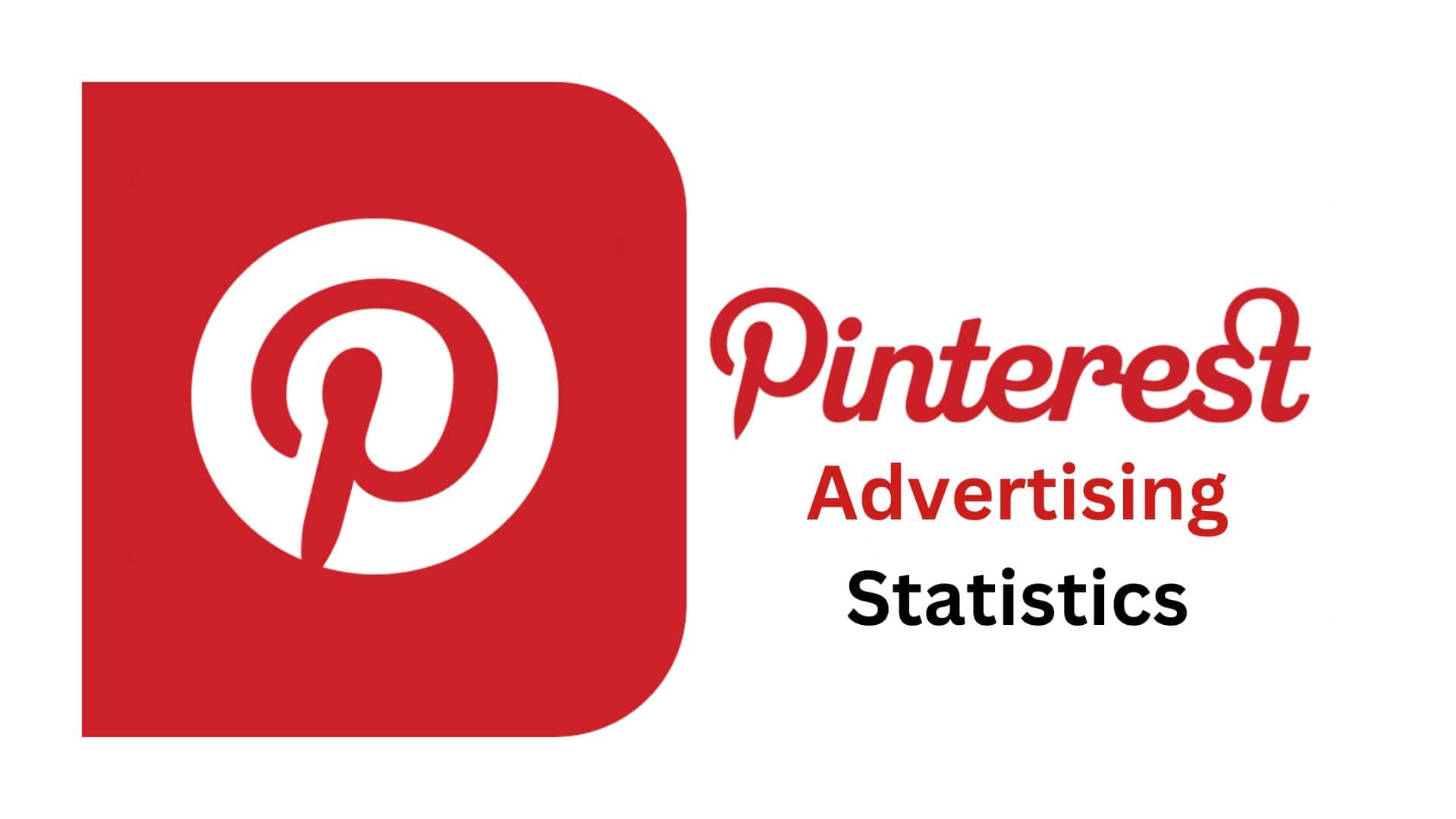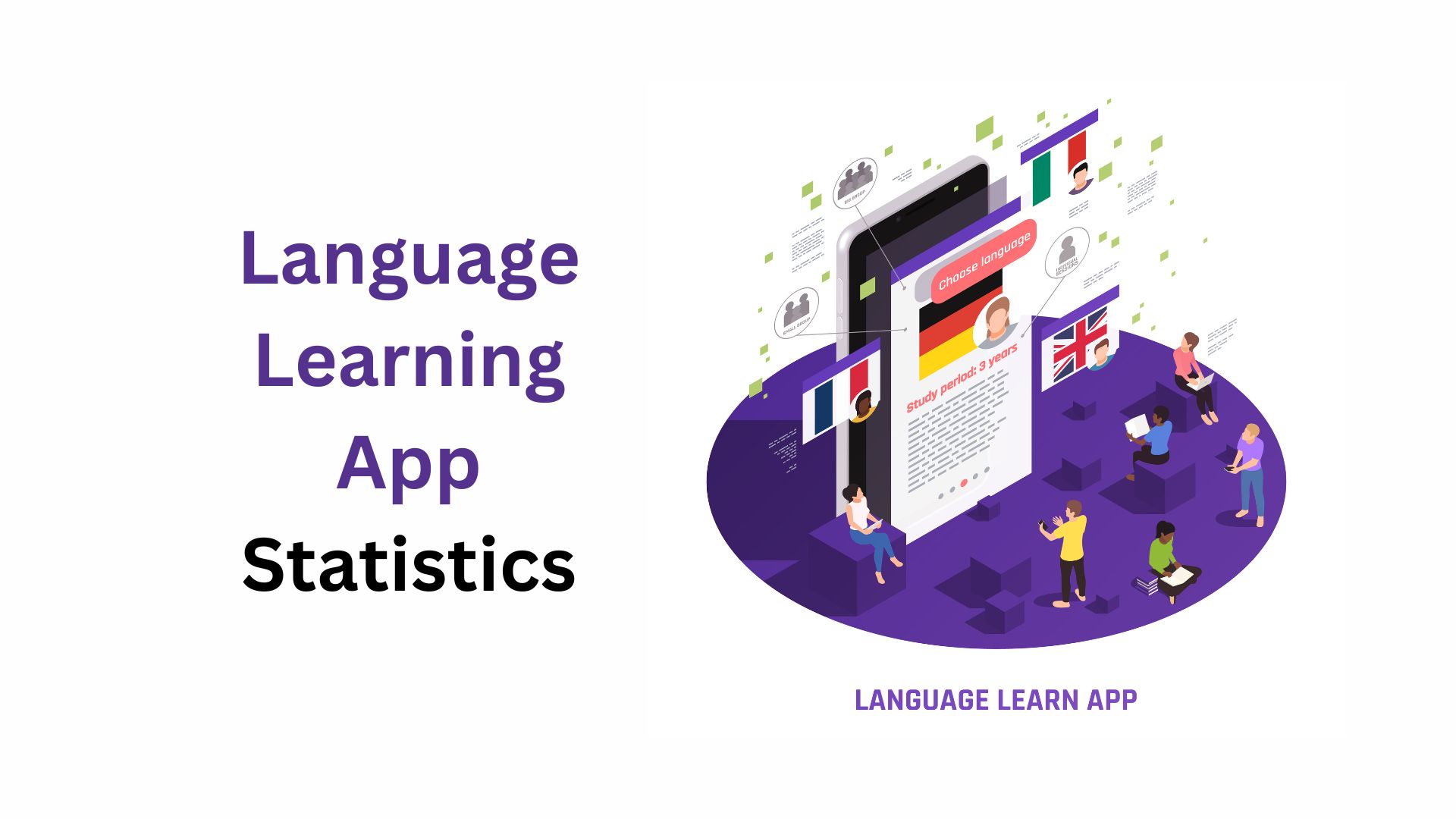iOS Statistics and Facts, By Devices, Market Share, Users, Revenue And Trends (2025)
Updated · Sep 13, 2025
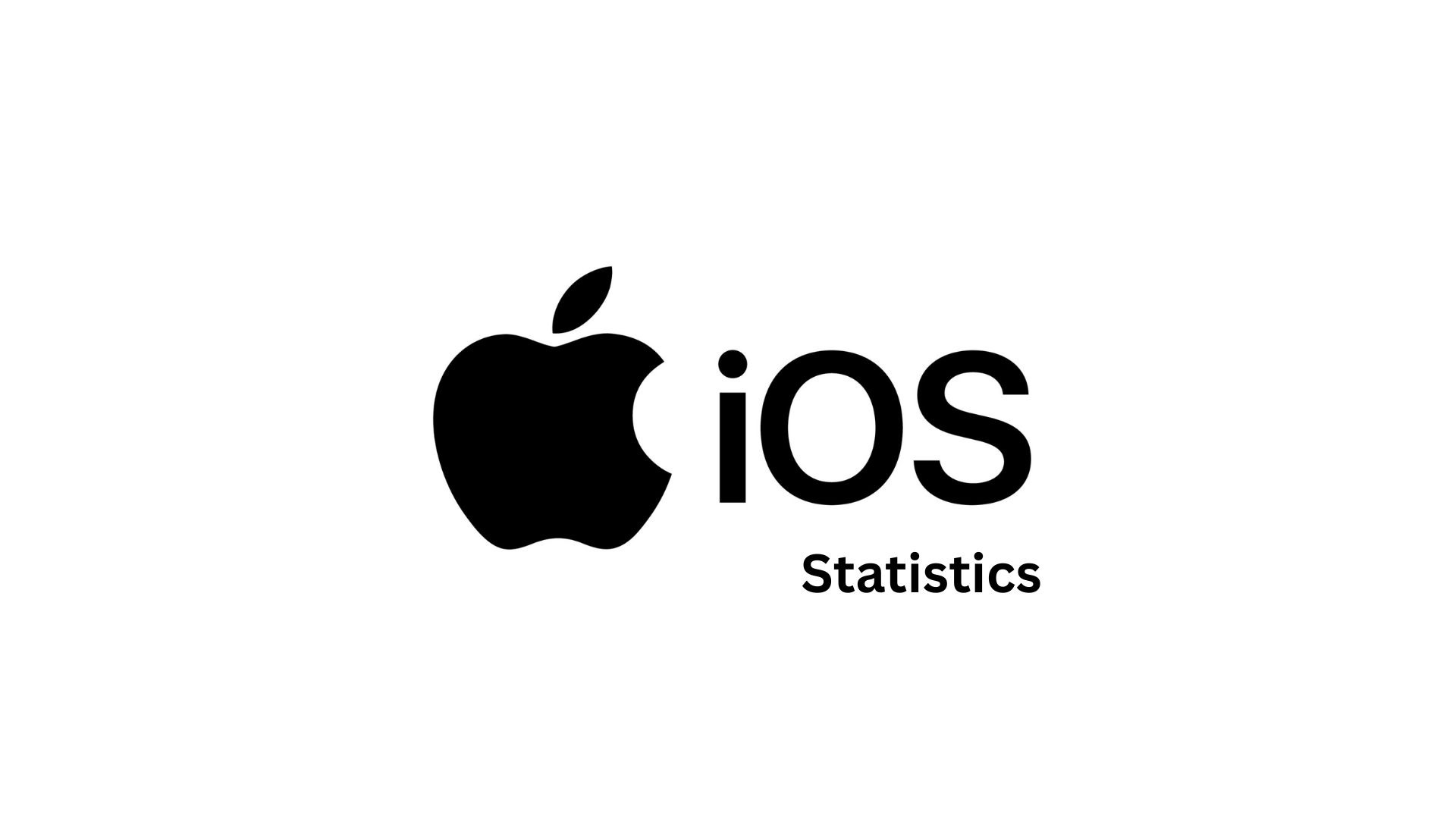
Table of Contents
- Introduction
- Editor’s Choice
- iOS Market Share By Continent
- iOS Revenue
- iOS Apple Store Categories
- Leading iOS App Categories By Downloads
- Download Share of App Categories on iOS
- iOS Version Market Share
- iOS Vs Android Demographics
- Top Selling iPhones
- Top-Grossing Apps By Revenue
- App Development Considerations – iOS vs Android
- Conclusion
Introduction
iOS Statistics: iOS is the operating system that powers iPhones and iPads, shaping how millions of people interact with technology every day. By March 2024, it remained one of the most influential platforms globally, impacting the way users communicate, shop, learn, play games, and work. Its ecosystem continues to drive innovation in mobile applications, security features, and user experience, making it a central part of modern digital life.
Here is a clear, numbers-first snapshot of iOS statistics in 2024: market share, devices, App Store activity, spending, security, and the business around it.
Editor’s Choice
- In somewhat affluent regions like North America (58%), Canada (60%), and Oceania (57%), iOS dominates.
- Apple’s App Store made US$24.97 billion in Q4, while Apple saw revenues upwards of US$391 billion in 2024. iOS users spend 2.5X more on in-app purchases as opposed to Android users, with over 85% of this revenue generated through subscription-based apps.
- The most popular categories remain games, business, and utilities, with 206,000 free games and roughly 14,700 paid versions. Other fast-expanding categories include shopping, social networking, health & fitness, and productivity.
- Fashion applications led downloads in H1 2023 at 49%, with marketplaces following at 14%, retailers at 10%, and other commerce-related applications sharing the rest.
- Most users update quickly. As of July 2025, iOS 18.5 possesses a market share of 69.91%, while older versions like iOS 15.8 have been under 3%.
- Premium models like iPhone 14, 16, and 16 Pro Max are competing for higher-end sales with global shares ranging between 2.8% and 3.9% for each model.
- DouYin with US$372.8 million, TikTok with US$324.4 million, Picoma with US$228.32 million, Honour of Kings with US$165.75 million, and Tencent Video with US$165.71 million, which underlines the dominance of mobile video, gaming, and paid digital content on iOS.
- The average cost of developing a user-friendly basic app for iOS sits between US$30K and US$50K.
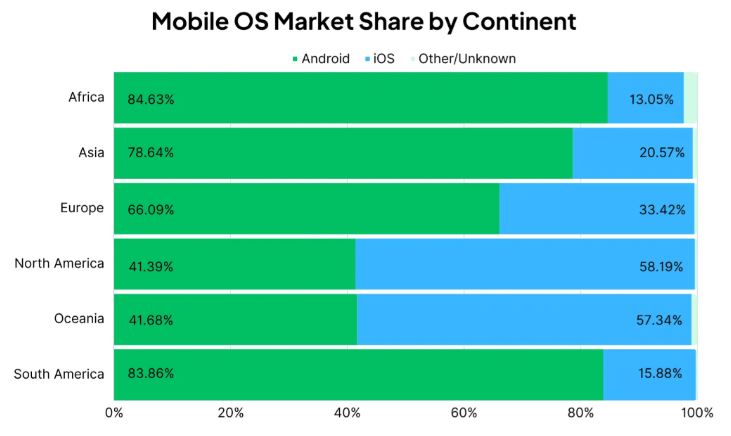
(Source: mobiloud.com)
- As per Mobicloud, iOS statistics state that when we take a look at the use of iOS and Android across the world, the picture really changes with respect to country and region.
- In the United States, iPhones are more popular; in the United Kingdom, the split is nearly equal, with iOS having just a bit more than 51%.
- Furthermore, Canada strongly favours Apple, with iOS capturing 60% of the market share; Germany grapples a little toward Android, with 61% in its hands.
- Asia’s two giant countries demonstrate how big Android can be: it has 75% market share in China and utterly dominates India with 95%.
- Only some 3.9% of Indian smartphone users use iPhones. Per region, North America has an obvious love for iOS, constituting 58%, with Android just behind at 41%.
- In Europe, the other way round—Android holds 66% while iOS stands at 33%. Across Asia, Android comprises 79% of the users, leaving only 20% for iOS.
- Africa closes the gap widest, with 85% Android, rivalled by 13% with iOS and another 2% with other mobile systems.
- South America shares the pattern closely, with Android at 84% and iOS at 16%.
- In an Oceanian market, which includes countries such as Australia and New Zealand, the Apple product is stronger with an iOS share of 57 and an Android share of 42.
- This essentially means that iOS generally dominates the richer markets such as North America, Canada, and Oceania, whereas Android leads almost strongly in Asia, Africa, South America, and parts of Europe, to name a few.
iOS Revenue
- During Q4 2024, the entrée revenues of the App Store stood at US$24.97 billion, mainly from software, digital content, iTunes, AppleCare, Apple Pay, and licensing.
- This put the total Apple revenue at nearly US$391 billion for the entire year, emphasising the profitable revenue flow into the iOS ecosystem. iOS app development becomes an attractive venture for entrepreneurs who want strong returns.
- The iOS user base has a reputation of being more affluent compared to their Android counterparts, and iOS users stay a very long time with the platform.
- Because of its price, creating an app for iOS would most definitely range anywhere from as low as US$15,000 to US$100,000 for feature-rich apps, or even US$20,000 to US$150,000, depending on the application’s complexity.
- However, this build becomes the most promising due to huge returns from in-app purchases, subscriptions, and advertisements.
- Subscription still holds the highest percentage, accounting for over 85% of total revenue from the App Store.
- On the other hand, iOS users spend about 2.5 times more via in-app purchases than Android users, which means it is a very premium market.
- However, paid apps exist, but many iOS users find more incentive in downloading free ones.
- On average, paid apps cost less than US$1, but top paid apps can legitimately be priced at US$10. This pricing spectrum gives developers and businesses a way to monetise their software/service.
- For business owners, the creation of a unique and engaging iOS app opens the door to having a loyal and high-spending customer base. In return, this leads to higher revenue potential in the longer run.
iOS Apple Store Categories
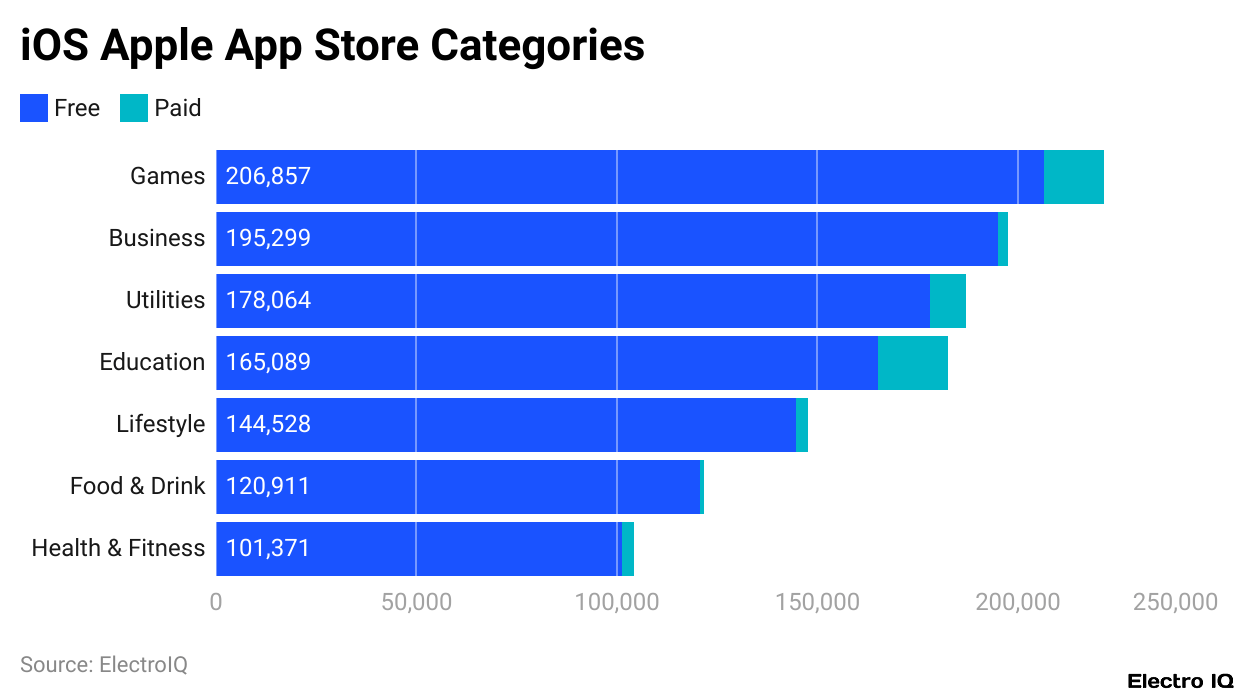
(Reference: coolest-gadgets.com)
- As of March 2024, the largest categories on the Apple App Store were games, business, and utilities.
- In particular, games have more than 206,000 free versions and approximately 14,700 paid versions, signaling that more users are inclined towards free downloads.
- Other than these top three, education, lifestyle, food & drink, and health & fitness are the other big categories, attracting high user and dev interest.
- Basically, the App Store is mostly inundated by free apps, giving users further ability to sample new apps and developers the option to monetise via ads, in-app purchases, or subscriptions.
Leading iOS App Categories By Downloads
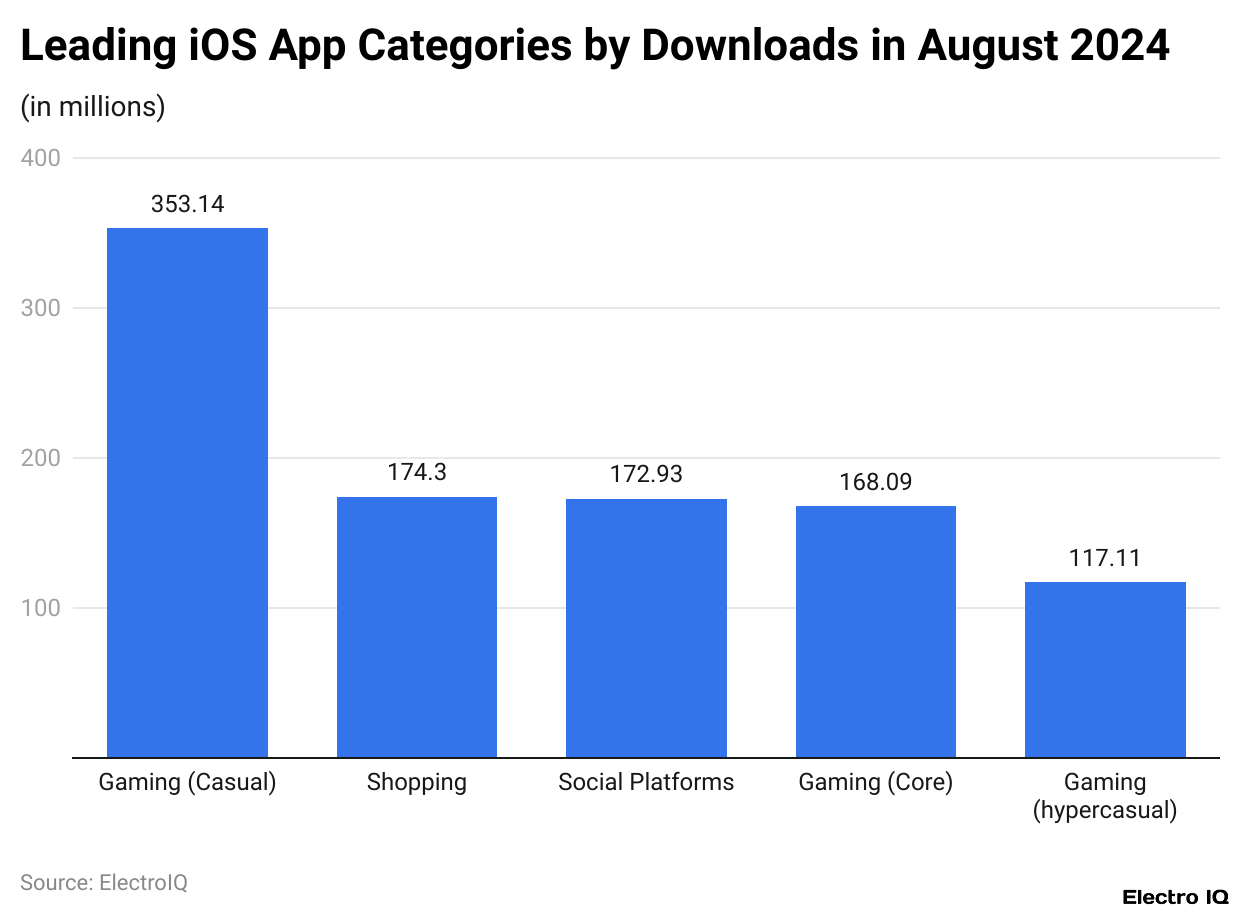
(Reference: ripenapps.com)
Gaming
- The most lucrative of iOS applications is gaming since these apps offer a pleasurable, thrilling experience on the go. Users spend extravagantly on mobile games in the form of in-app purchases, making this a very profitable category for developers. According to reports from the industry, gaming apps bring about big revenues in 2024:
- Core gaming: US$1,810 million
- Casual gaming: US$1,150 million
- Hypercasual gaming: US$22.07 million
- Over 55% iOS app revenue comes from gaming, making it the most lucrative category for business owners and entrepreneurs seeking huge returns on iOS.
Shopping
Shopping Apps constitute another major force in the iOS Ecosystem.
- They provide for Artificial Intelligence-based recommendations, safe payment gateways to enhance user engagement, and smooth checkout experiences.
- As mobile commerce evolves to become a standard way of shopping, businesses having iOS shopping apps stand to gain by providing an enhanced buying experience to their customers.
Social Platforms
- Social networking applications continue to hold sway, now inseparable from many people’s daily activities.
- These applications provide avenues through which people can meet, interact, and share experiences.
- Emerging computer technologies such as artificial intelligence and machine learning are helping make applications more personal by building tailor-made feeds and recommendations based on the user profiles and interests.
- An iOS update opens up new APIs and frameworks to developers, giving them the opportunity to create social apps with some really cool features.
- Therefore, social platforms provide a safe opportunity for businesses to break into or expand in the iOS ecosystem.
Health and Fitness
- The health and wellness category in iOS is booming.
- Apps such as Headspace and MyFitnessPal saw a 25% increase in downloads, proving that users have been growing more and more interested in fitness and mental health.
- For health- or wellness-oriented entrepreneurs, iOS serves as a powerful platform on which to create apps aimed at the well-being of people.
Productivity
- Business and productivity apps such as Notion and Slack are flourishing in the iOS ecosystem to help work and collaborate.
- In 2024, these applications saw about a 15% increase in DAUs, highlighting their centrality in workplace efficiency and organisation.
| App Categories |
Share of downloads
|
| Fashion | 49% |
| Marketplace | 14% |
| Retailer (B2C) | 10% |
| Sneakers, Streetwear and Sports Apparel | 9% |
| Other Commerce and shopping | 9% |
| Furniture and home design | 5% |
| Wholesaler (B2B) | 4.4% |
(Source: coolest-gadgets.com)
- As per a Statista report, iOS statistics show that the fashion apps were dominating iOS downloads in the first half of 2023, fetching almost half of app installs with 49%.
- This figure disclosed how huge the demand was for clothing and fashion-related apps when compared with other categories.
- Following fashion was the next largest segment at marketplace apps, with a mere 14%, followed by retailer apps with 10%.
- Sneakers, streetwear, and sportswear represented 9% just like other commerce and shopping apps, furniture and home design took up 5%, and wholesaler or B2B stood at about 4.4%.
- All in all, the statistics clearly point out how none of the other categories came close near fashion in iOS popularity in 2023.
- Put together, the rest of the categories came to less than half of the total market share, proving that fashion was the single biggest download driver on iOS back then.
- This trend also shows that iOS apps were the leading choice among users for exploring and shopping for fashion, more than they were for any other kind of items or services.
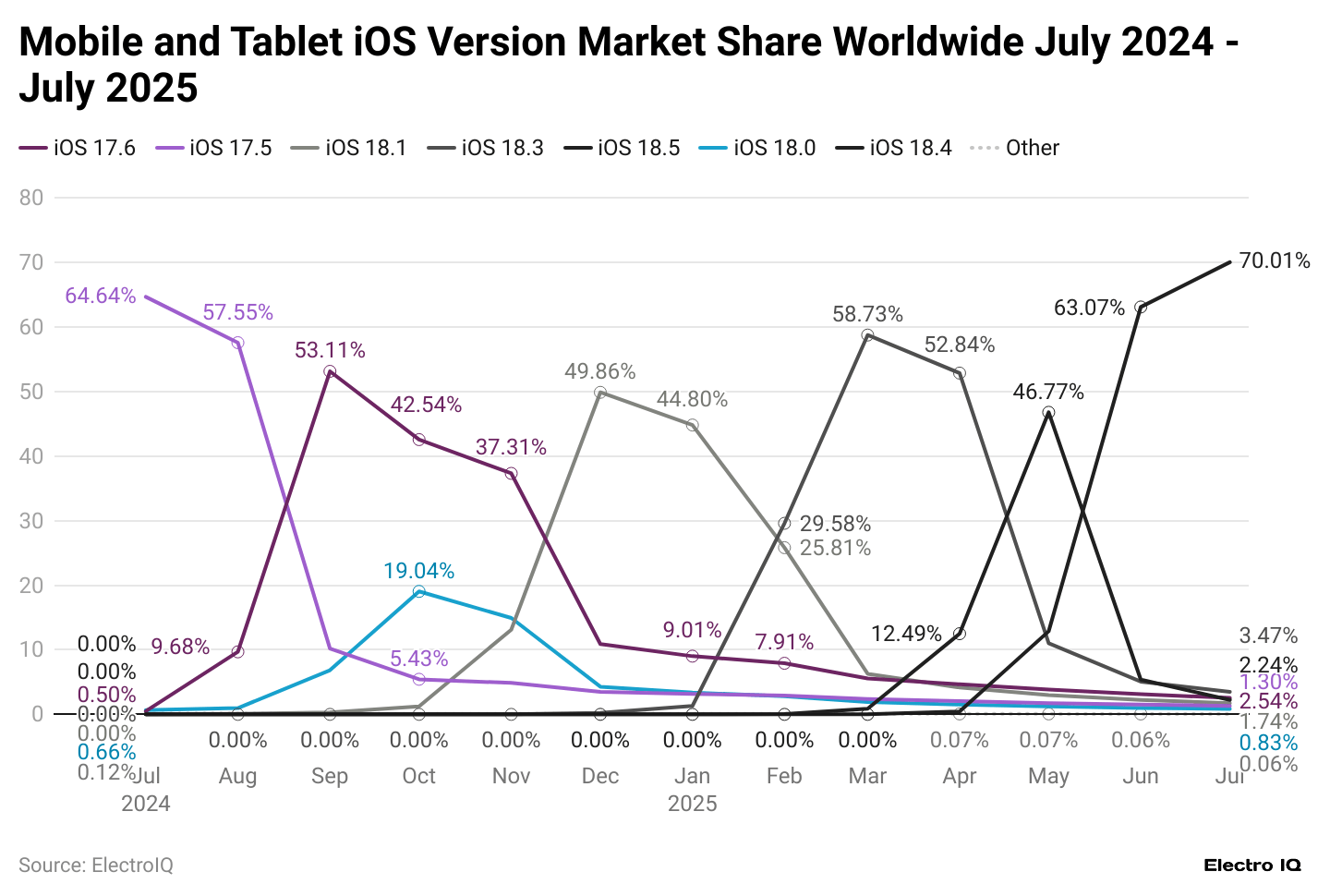
(Reference: statcounter.com)
- As of July 2025, iOS 18.5 is the most installed iOS version across the world on iPhones with a whopping market share of nearly 70%, 69.91% to be specific.
- Following it is iOS 18.3, which is only 3.49%. Then we have older versions like iOS 16.7, which is at 2.82%, and iOS 17.6 at 2.55%.
- Some users are still on iOS 18.4 with 2.27%, and then there are those few located around iOS 15.8 with 2.2%.
- This behaviour shows a majority willing to upgrade to the newest version over time, while the smallest number don’t.
iOS Vs Android Demographics
| Demographic | iOS (%) |
Android (%)
|
| Age 18–34 | 44 | 30 |
| Female | 31 | 54 |
| Male | 28 | 60 |
| Income >$50K | 60 | 40 |
| College Degree | 55 | 45 |
(Source: tekrevol.com)
- iPhone users usually tend to be younger, affluent, and urban residents.
- Some 44% of 18- to 34-year-olds use iPhones compared to 30% for Android, with social media heavily influencing this trend.
- Slightly more women (31%) than men (28%) favour iOS, possibly because of Apple’s focus on elegant design.
- On average, iPhone users earn US$53,251 annually, whereas Android users make only US$37,040, and iPhone users are much more likely to be college graduates.
- Areas like New York City see the strength of iOS; in the rural lands where affordability and variety count more, Androids are the favourites.
- Talking about generations, Gen Z prefers iPhones mainly for camera quality and that status boost on TikTok, with 50% of them placing value on it.
- Millennials are at 35% iPhone use, appreciating Apple’s ecosystem for both business and leisure recreation purposes.
- Gen X goes Android, with 55% choosing it due to budget alternatives and customisation, while Boomers go with Android at an even higher percentage of 60%, mostly due to familiarity with well-established brands like Samsung.
- Regionally, the United States sees younger and richer city dwellers gravitate to the iPhone for brand prestige.
- Android steals the show in Asia for its low price, especially seen in India, where budget-friendly phones are key.
- Europe extends a different scenario altogether-iOS is winning a couple of battles while Android marches farther in Germany.
- Overall, iPhones represent luxury and status in markets like the US, while Androids are popular worldwide for their accessibility and price range.
Top Selling iPhones
| Model | Global Share (%) |
Units Shipped (M)
|
| iPhone 14 | 3.9 | 12.6 |
| iPhone 16 | 3.5 | 11.3 |
| iPhone 16 Pro Max | 3.2 | 10.4 |
| iPhone 15 | 2.8 | 9.1 |
(Source: tekrevol.com)
- In 2025, competition between iPhones and Android devices is a tell-tale sign of Apple’s dominance in the premium arena, whereas Android proves strong in volume at various price bands.
- Among the best-selling smartphones worldwide are iPhones such as the iPhone 14, which retains a global share of 3.9% with approx 12.6 million units shipped.
- The newer iPhone 16 holds a share of 3.5% with 11.3 million units shipped, while the iPhone 16 Pro Max follows with a 3.2% share of 10.4 million units shipped.
- Likewise, the iPhone 15 enjoys the honour of being a favourite with 2.8% shares and 9.1 million units shipped.
- On the Android side, the Galaxy S24, Xiaomi 14, and Oppo Find X7 take the lead in their respective segments by appealing to users with variety and affordability.
- Such contrast shows how Apple depends on just a few premium models to generate bulk revenue and clout around the globe, whereas Android makers command with the availability of broad device options at various price points.
- For sellers or even developers, these numbers will decide which devices get prioritised when it comes to stocking, marketing, or creating apps.
Top-Grossing Apps By Revenue
| iOS App | Revenue ($M) |
| DouYin | 372.8 |
| TikTok | 324.4 |
| Picoma | 228.32 |
| Honor of Kings | 165.75 |
| Tencent Video | 165.71 |
(Source: tekrevol.com)
- The highest-grossing iOS apps in June 2023 demonstrated the massive earning capacity of entertainment and social platforms.
- DouYin, the Chinese counterpart of TikTok, was the highest-grossing, pocketing US$372.8 million from users.
- Following up was TikTok with US$324.4 million, which implied the global footprint of short-video apps.
- Piccoma, a Japanese digital manga app, earned US$228.32 million, an indicator of how much mobile reading and comics are in demand.
- Then came mobile gaming, having yet another big share with Honour of Kings at US$165.75 million, while Tencent Video, an immensely popular streaming app, earned US$165.71 million.
- These numbers illustrate how video, games, and digital content are the leading spending channels for users on iOS.
App Development Considerations – iOS vs Android
- Most developers face the key decision of choosing whether to develop for iOS or Android when building an application. iOS development is generally more expensive, charging anywhere between US$30,000 and US$50,000 for a rudimentary app.
- This cost is mostly dictated by the strictness of the Apple guidelines and the testing process itself.
- The money usually comes back in the form of higher earnings per app, which is roughly US$12.77 for iOS compared to US$6.19 for Android.
- Android is relatively less expensive. However, the cost of any type of app would range between US$20,000 and US$40,000 for development.
- An Android developer needs to face the grave challenge of fragmentation across thousands of devices and OS varieties, which means additional testing to witness the compatibility.
- iOS developers sit with Xcode, which makes for a very elegant and polished coding environment. At the same time, Android Studio allows a wide range of hardware.
- Once-of-it code technique in cross-platform frameworks like Flutter and React Native means less time to code and development costs down by almost 30%.
- Nearly 42% of developers use Flutter alone today. That really makes it a very attractive option for startups on a budget or projects on a low cost.
Conclusion
iOS remains a fiercely competitive mobile platform due to its smooth ecosystem, excellent user experience, and vast range of applications. Apple ensures user engagement in gaming, social, productivity, and lifestyle apps by maintaining high standards of quality, design, and innovation. The platform is popular among the younger, wealthier, and urban demographics, making the App Store an attractive place for developers to sell their applications through subscriptions, in-app purchases, and digital content.
Continued system updates, AI integration, and new device launches help build loyalty and satisfy users. iOS stands as a strong contender in the field of mobile technology: A perfect mix of high-end machinery, software innovation, and a bustling developer ecosystem.
FAQ.
iOS captures approximately 58% of the market in the North American market, with Canada at 60%, and Oceanian levels standing at 57%. In Europe, iOS grabs 33% of the market against 66% for Android, while Asia sees 79% of users choosing Android. Android also seems more favoured in Africa and South America, with 85% and 84% adoption by the users, respectively, which again paints a picture of iOS being strong in wealthy urban markets.
In Q4 2024, the Apple App Store earned US$24.97 billion, ultimately culminating in almost US$391 billion for the year-to-date revenue generated by Apple. Users on iOS are reported to contribute approximately 2.5 times more to purchases made inside the applications.
Games, business, and utilities are classy categories, having 206,000 free games and 14,700 paid games. Other growing categories include shopping, social networking, health and fitness, and productivity. Fashion apps were at the top position for downloads in H1 2023, with 49%, while marketplaces, retailers, and other commerce apps combined came to less than half of downloads.
Premium models lead global sales, with the iPhone 14 at 3.9% share (12.6 million units), iPhone 16 at 3.5% (11.3 million units), iPhone 16 Pro Max at 3.2% (10.4 million units), and iPhone 15 at 2.8% (9.1 million units).
Developing an iPhone app with basic features would set back an individual by US$30,000 to US$50,000, as Apple is quite stringent on its guidelines, whereas Android apps typically go for US$20,000 US$40,000. iOS apps have a greater revenue potential (US$12.77/app versus US$6.19 on Android). Cross-platform frameworks such as Flutter and React Native reduce costs by up to 30% and help create efficient apps that run on both iOS and Android.

I hold an MBA in Finance and Marketing, bringing a unique blend of business acumen and creative communication skills. With experience as a content in crafting statistical and research-backed content across multiple domains, including education, technology, product reviews, and company website analytics, I specialize in producing engaging, informative, and SEO-optimized content tailored to diverse audiences. My work bridges technical accuracy with compelling storytelling, helping brands educate, inform, and connect with their target markets.

